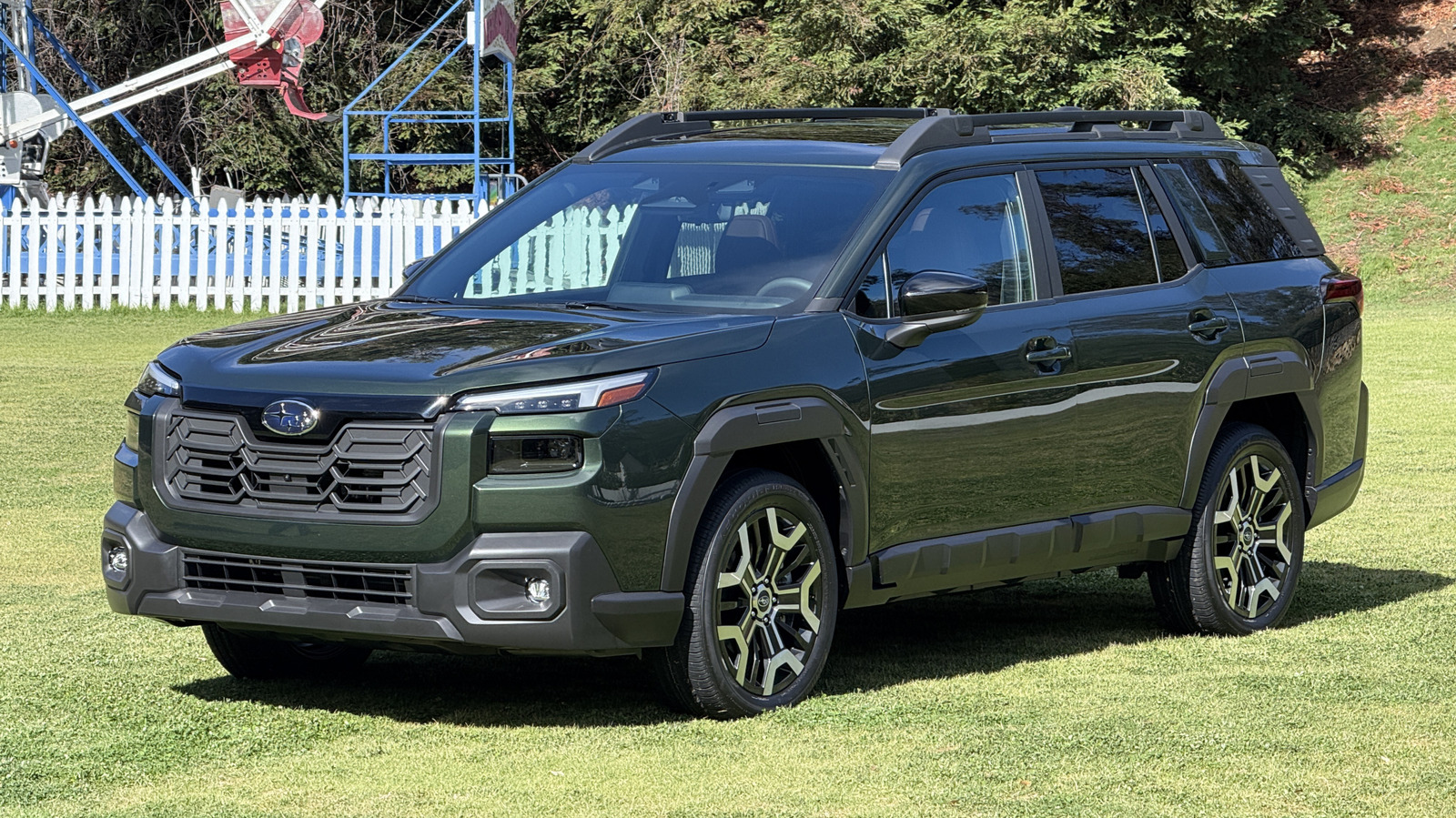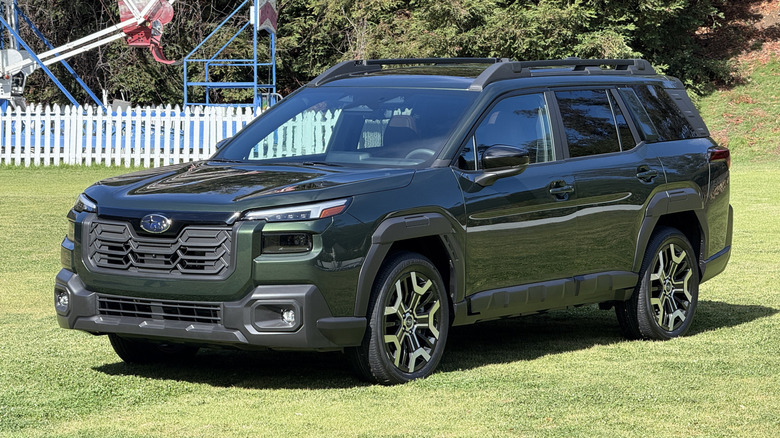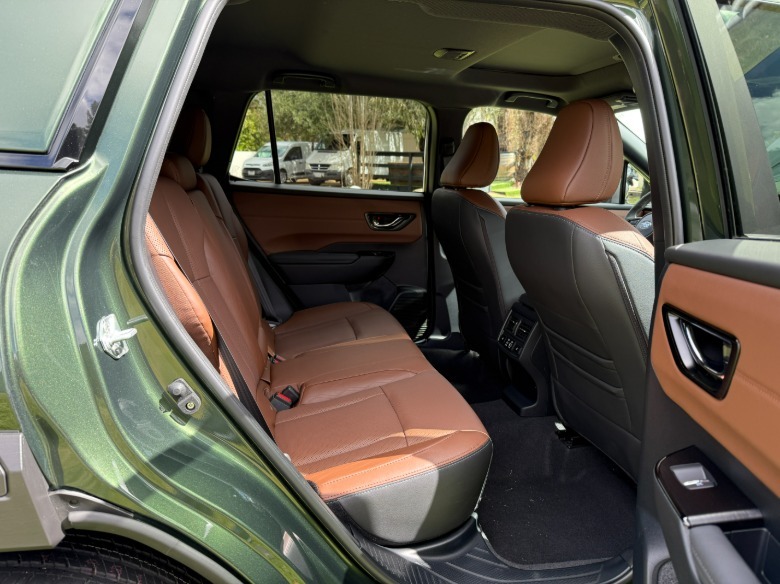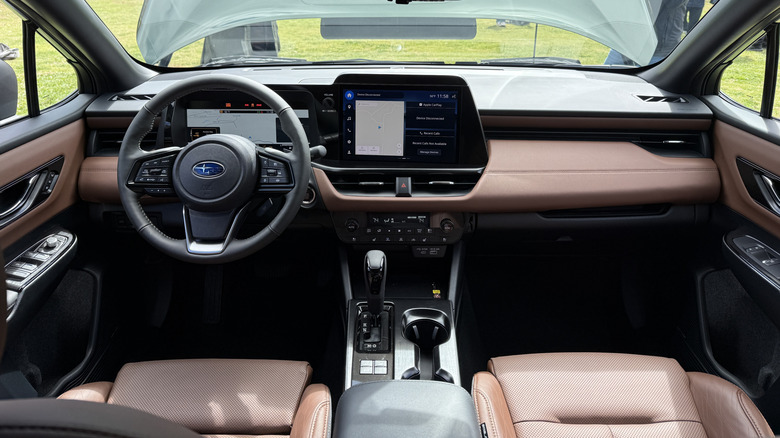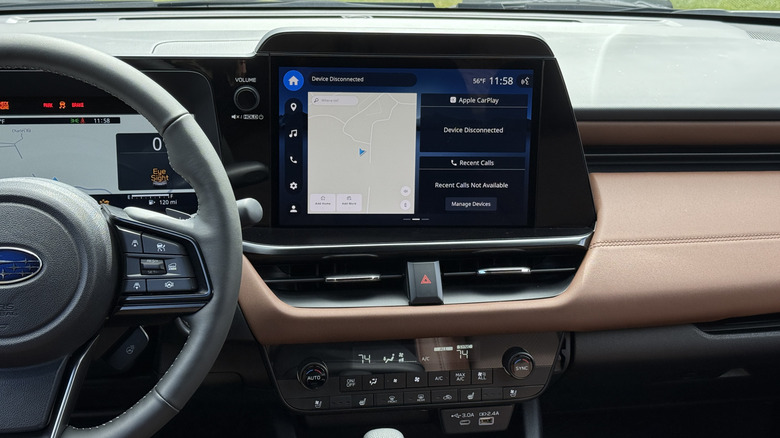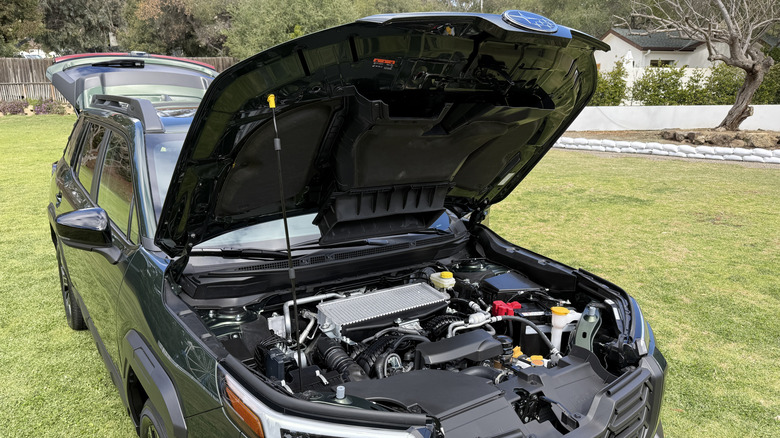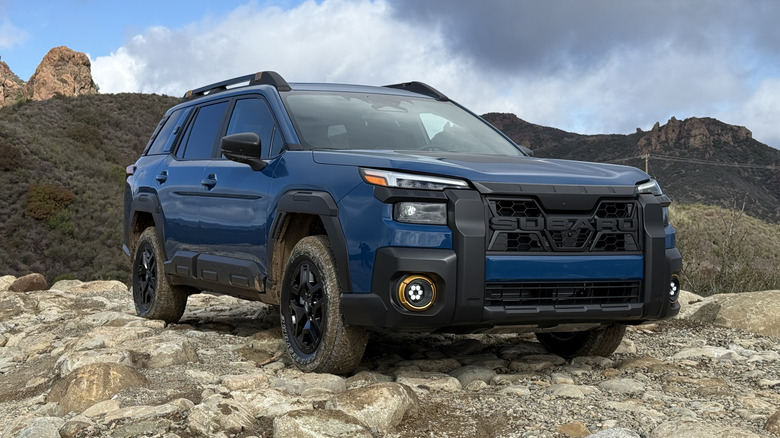Redesigned for the 2026 and revealed today at the New York International Auto Show, the new seventh-generation Subaru Outback is ugly. It’s weird, it’s strange, it’s odd. I know you’ve seen that lead image and are preparing your comments already. You’re probably thinking “it’s just a big ugly SUV now, what the hell!” Subaru knows this. Subaru doesn’t care. Its customers don’t care either. At a preview for the new Outback a few weeks before this reveal, the Outback’s product planner told me Subaru buyers couldn’t really care less about styling — they’re more concerned with at least a dozen other things, from off-road capability to efficiency to practicality to the company’s stance on social issues. In fact, Subaru buyers kinda like when their cars are distinctive and ugly. Around 50% of Subaru owners also have dogs, so maybe the cars just remind them of their mutts.
I know it’s not just the styling you don’t like — it’s how the new Outback has seemingly grown in a major way and transformed into even more of an SUV, shirking its wagon roots. That’s not exactly accurate, though. The new Outback is really only bigger than the old one in terms of height, and I think its overall shape is still quite wagon-y. Plus, that same product planner said that Outback buyers don’t really care about retaining the wagon character, either. This new Outback is designed to give those loyal customers what they want, and in many ways, the 2026 Outback seems like one of Subaru’s best offerings in a long time.
Boxiness is so in
The new Outback rides on the same platform as basically every other Subaru, and compared to the outgoing model its two inches taller in height but basically identical in every other dimension — Outback customers were apparently super happy with the outgoing model’s size. It has a much bluffer nose, less tumblehome and a more upright tailgate, giving it that SUV-ier vibe, but it just reminds me of boxy ’80s wagons like the Volvo 240. Subaru says it was a conscious decision to uncouple the Outback’s design from the Legacy sedan so it could stand on its own, and it’s definitely a more in-your-face look.
While it’s definitely not going to win any beauty contests, I actually really like how the new Outback looks. There are some cool details and nice subtle surfacing touches, and pretty good executions of the now-ubiquitous split headlight and rear lightbar trends. All of the cladding pieces, like the wheel arch trims, side skirts and lower bumper fascias, are made from a plastic with a new texture that offers better aerodynamics and scratch resistance. Apparently the new green paint was a must, too.
Room for even more stuff
That upright rear end means the new Outback has more two cubic feet more cargo space than before, and the cargo area itself is two inches taller. Subaru says the 43.3-inch-wide load floor is wider than all of its competitors as well. Flexible hooks work as gear tie-down points, and the ones on the tailgate can hold up to six pounds — Subaru gives lanterns and wet gear as examples of what you could hang from them. Passengers in the first and second rows have more headroom, and the squared-off body seems to give the driver better outward visibility in all directions.
The roofline is flatter and has new raised roof rails as standard that can support a static load of 800 pounds or a dynamic load of 220 pounds. There are measurement markers on the rails so owners can easily place crossbars and other accessories, and in a Subaru first the Outback has a 220-pound lateral load rating so you can hook up something like a clothesline or hammock. Instead of a traditional cargo cover, the Outback has a soft tonneau cover that can be configured in a bunch of different ways — as a cover for your stuff, as a partition to keep pets or dirty things separate, as a sort of hammock for your stuff, as a cover for the rear bumper when loading things in.
Subaru’s PR team made a big deal out of the Outback’s redesigned cupholders, and for good reason. Engineers from the U.S. took all sorts of different cups to Japan to try out on Subaru’s test track, and apparently the Japanese team couldn’t believe that Big Gulps are real and a genuine selling point for Americans. The front cupholders are bigger and better placed, with new supports to securely hold smaller beverages, and the door pockets can hold 32-ounce water bottles.
Subaru’s nicest interior ever
The designers wanted to leave the ruggedness for the Outback’s exterior and give it more of a living room feel inside, and the Outback has easily the nicest interior we’ve seen on any modern Subaru. The layout and design is all about ease of use, which is also why the Outback’s got a host of physical buttons and knobs for the climate controls, audio volume and other functions. While not particularly fancy, material and build quality has definitely gone up a notch, and everything certainly looks better than on the old car, especially with this two-tone brown color scheme.
Cloth seats are no longer offered — it’s hard to adventure with, says Subaru — and there are all sorts of recycled materials used throughout the interior, like a headliner made from bottles. The new “low-fatigue” seats are mounted directly to the chassis, which reduces lateral sway by 42% and makes your head bob around less, plus there’s now an adjustable driver’s seat cushion. Subaru also says there is more sound-deadening materials in the headliner, and exterior aerodynamic tweaks reduced interior wind noise by 10%.
Finally, a tech upgrade
At long last Subaru has ditched the large portrait-oriented touchscreen, which also means base models will no longer have a pair of horrible screens in the dashboard. Every 2026 Outback will come have a 12.3-inch digital gauge cluster and a 12.1-inch central touchscreen that has a stronger processor and a new infotainment system with simpler menus, better performance and new features. A home screen can show a bunch of information at once, like a map view along with navigation directions, and there is a row of shortcuts along the side. The gauge cluster is a lot more customizable (and has a reduced Calm view), and it can show navigation information from Apple CarPlay or Android Auto, both of which are wireless as standard. While the visuals aren’t exactly class-leading, it is a huge improvement over Subaru’s old stuff.
Standard on every 2026 Outback is Subaru’s latest EyeSight suite of driver-assist features, which is powered by a three-camera setup with a new radar sensor. The Outback’s EyeSight includes adaptive cruise control with stop and go and lane centering, automated emergency braking with improved cyclist and pedestrian detection, lane departure warning, lane sway warning, and front cross-traffic alert. A vibrating haptic feedback offers better warnings for the driver. In a first for Subaru, you’ll be able to get Level 2 hands-free driving that works at up to 85 mph on certain highways, and it’ll do automatic lane changes as well. Emergency stop assist is also new, which will pull the car over, activate the hazards, unlock the doors and call emergency services if it detects the driver is unresponsive when using adaptive cruise control.
You can still get a turbocharged Outback
The base motor for the 2026 Outback is an updated naturally aspirated 2.5-liter flat-4 that makes 180 horsepower and 178 pound-feet of torque, two fewer horses but two more torques than the old model. The only transmission option is a continuously variable automatic (that does have 8 simulated gears you can “shift” through), and every Outback comes standard with all-wheel drive. In XT models you get a turbocharged 2.4-liter boxer motor with 260 hp and 277 lb-ft, the same as before. Every Outback also has the X-Mode system with a few different drive modes for various off-road situations.
Subaru gave the new Outback a version of the WRX’s steering rack for better responsiveness and a natural feel, and the all-wheel-drive system takes into account steering angle data for easier off-road cornering. The AWD system also has a quicker center differential lockup to reduce wheelspin. Every 2026 Outback has the same 8.7 inches of ground clearance as before, and 19-inch wheels are available for the first time.
There’s a new Wilderness, too
Instead of waiting a few months, Subaru is launching the adventure-ready Wilderness version of the new Outback alongside the standard model, and it’s even more distinct than before in terms of styling and specs. Based on the turbocharged XT, the 2026 Outback Wilderness ups the ground clearance to 9.5 inches, gets a unique suspension system with electronic dampers that minimize pitch and body roll, wears 17-inch wheels with chunky Bridgestone Dueler all-terrain tires, can tow up to 3,500 pounds, and has improved approach, breakover and departure angles, among other improvements.
It also looks really, really bonkers, comes with higher-end features than the model it replaces, and has some functional design touches like specific points on tailgate against which you can rest skiis, kayaks or other objects without damaging the bodywork. The Wilderness is worthy of its own story, so we’ve got one for you.
When is it coming?
Subaru says the 2026 Outback will go on sale in late 2025, and it’ll come in Premium, Limited, Touring, Limited XT, Touring XT, and Wilderness trims. (The Wilderness will hit dealers in early 2026.) We don’t know anything about pricing yet, but luckily for Subaru, the new Outback will be produced at the same factory in Indiana that has been pumping Outbacks out since 1999 (and Legacy sedans and wagons since ten years before that). Hopefully that means the new Outback won’t be that affected by the tariffs, though surely many of its parts are subject to them. If I had to guess, base prices might raise by a grand or two. Subaru says that more information about the seventh-gen Outback, including pricing and full specs, will be announced closer to its on-sale date. Say what you will about how the new Outback looks, but it’s clear that Subaru knows who is actually buying its cars and what they want.


